
Amiga is a family of personal computers introduced by Commodore in 1985. The original model is one of a number of mid-1980s computers with 16- or 16/32-bit processors, 256 KB or more of RAM, mouse-based GUIs, and significantly improved graphics and audio compared to previous 8-bit systems. These systems include the Atari ST—released earlier the same year—as well as the Macintosh and Acorn Archimedes. Based on the Motorola 68000 microprocessor, the Amiga differs from its contemporaries through the inclusion of custom hardware to accelerate graphics and sound, including sprites and a blitter, and a pre-emptive multitasking operating system called AmigaOS.

The Atari Lynx is a 16-bit fourth-generation hand-held game console released by Atari Corporation in September 1989 in North America and 1990 in Europe and Japan. It was the first handheld game console with a color liquid-crystal display. Powered by a 4 MHz 65C02 8-bit CPU and a custom 16-bit blitter, the Lynx was more advanced than Nintendo's monochrome Game Boy, released two months earlier. It also competed with Sega's Game Gear and NEC's TurboExpress, released the following year.

Marble Madness is an arcade video game designed by Mark Cerny and published by Atari Games in 1984. It is a platform game in which the player must guide a marble through six courses, populated with obstacles and enemies, within a time limit. The player controls the marble by using a trackball. Marble Madness is known for using innovative game technologies: it was Atari's first to use the Atari System 1 hardware, the first to be programmed in the C programming language, and one of the first to use true stereo sound.
A game engine is a software framework primarily designed for the development of video games and generally includes relevant libraries and support programs such as a level editor. The "engine" terminology is akin to the term "software engine" used more widely in the software industry.
A first-person shooter engine is a video game engine specialized for simulating 3D environments for use in a first-person shooter video game. First-person refers to the view where the players see the world from the eyes of their characters. Shooter refers to games which revolve primarily around wielding firearms and killing other entities in the game world, either non-player characters or other players.
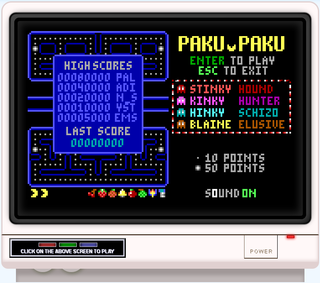
A personal computer game, also known as a computer game or abbreviated PC game, is a video game played on a personal computer (PC). The term PC game has been popularly used since the 1990s referring specifically to games on "Wintel" which has dominated the computer industry since.
Artworx was a Naples, Florida software company that produced and supported a line of computer games from 1981 to 2015. It is named after the founder's given name. At first the company published a variety of games, including titles in adventure and arcade-action genres, but were later best known for a strip poker series.

The Virtual Theatre is a computer game engine designed by Revolution Software to produce adventure games for computer platforms. The engine allowed their team to script events, and move animated sprites against a drawn background with moving elements using a point-and-click style interface. Upon its first release, it rivaled competing engines like LucasArts' SCUMM and Sierra's Creative Interpreter, due to its then high level of artificial intelligence. The engine was first proposed in 1989, while the first game to use it, Lure of the Temptress, was released in 1992, followed by Beneath a Steel Sky (1994), Broken Sword: The Shadow of the Templars (1996) and Broken Sword II: The Smoking Mirror (1997).
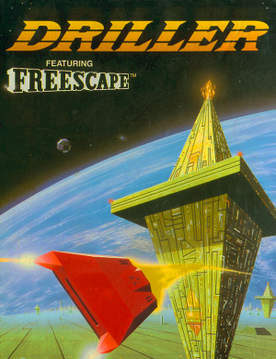
Driller is a 1987 puzzle video game. It was written by British developers Major Developments and published by Incentive Software for the ZX Spectrum, Commodore 64, Amstrad CPC, Amiga, Atari ST, and MS-DOS. It uses the Freescape 3D game engine.

Alien Breed 3D II: The Killing Grounds is a first-person shooter game developed by Team17 for Amiga. Published by Ocean Software in 1996, it is the fifth game in the Alien Breed franchise, a series of science fiction-themed shooters.
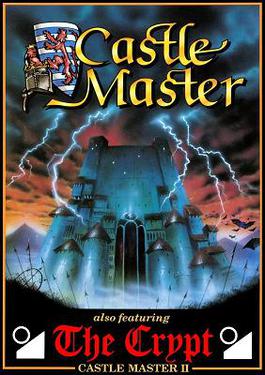
Castle Master is a 1990 video game developed by Incentive Software and published by Domark. It was released for the ZX Spectrum, Commodore 64, Amstrad CPC, Amiga, Atari ST and IBM PC. A compilation was released also in 1990 that contained the original and the sequel, Castle Master II: The Crypt.
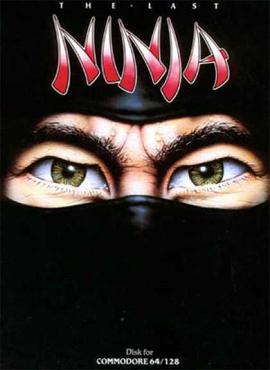
The Last Ninja is an action-adventure game developed and published by System 3 in 1987 for the Commodore 64. It was converted to the Apple IIGS, MS-DOS, BBC Micro and Acorn Electron in 1988, the Apple II in 1989, the Amiga and Atari ST in 1990, and the Acorn Archimedes in 1991.

3D Construction Kit, also known as 3D Virtual Studio, is a utility for creating 3D worlds in Freescape. Developed by Incentive Software and published by Domark, it was released in 1991 on multiple platforms. The game originally retailed for £24.99 for the 8-bit version, and £49.99 for 16-bit version and the 32-bit Acorn Archimedes version, in the United Kingdom. A sequel, 3D Construction Kit II, was released in 1992, but only available on Amiga, Atari ST and MS-DOS.
Incentive Software Ltd. was a British video game developer and publisher founded by Ian Andrew in 1983. Programmers included Sean Ellis, Stephen Northcott and Ian's brother Chris Andrew.

3D Construction Kit II, is a utility for creating 3D virtual worlds in Freescape. Developed by Incentive Software and published by Domark, it was released on November 10, 1992 as a sequel to 3D Construction Kit. Unlike its predecessor, 3D Construction Kit II was released simultaneously on three platforms: Amiga, Atari ST and MS-DOS.
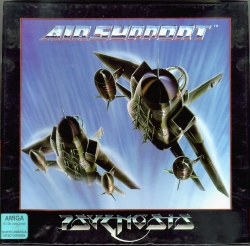
Air Support is a 1992 game for the Amiga and Atari ST. It is a top-down strategy game, with a first-person mode available for special missions. The game takes place during a retro-futuristic 21st century where all wars are fought in virtual reality.

Hunter is an early 3D action-adventure game in which the player navigates around a series of islands. Hunter was developed by Paul Holmes and Martin Walker (music), and was released by Activision for the Amiga and Atari ST home computers in 1991.

Dark Side is a 1988 video game published by Incentive Software for the Amiga, Atari ST, Amstrad CPC, Commodore 64, IBM PC compatibles, ZX Spectrum, and Sharp MZ-800. The game is a sequel to Driller, set in the Evath system but this time on Evath's second moon Tricuspid.
Cosmi Corporation (COSMI) was an American computer software company based in Carson, California. It sold low-cost software directly to consumers in large retail outlets, computer stores, and drug, hardware, and grocery stores. It had two major imprints: Celery Software, and Swift Software/Swift Jewel.

Total Eclipse is a first person adventure game released for the Amiga, Atari ST, Amstrad CPC, Commodore 64, MS-DOS and ZX Spectrum computers in 1988. It can also be considered an early example of a first-person shooter.














